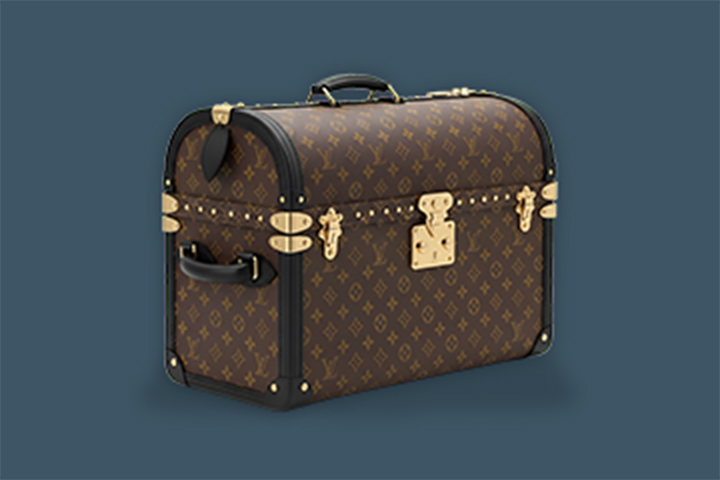Lost in the ETF jungle? Here's a compass to help you find your way

Keytrade Bank
keytradebank.be
October 23, 2025
3 minutes to read
The rise of ETFs has made investing increasingly easy to access. Yet there are so many available that you can easily struggle to see the wood for the trees. These ten criteria will help you find your way through the jungle.
The ETF market has reached a remarkable milestone. In the US, there are now more ETFs (4,300) than individual listed stocks (4,200) (source). This growth is no coincidence in itself. Exchange-traded funds provide investors with a unique combination of benefits, offering the diversification of a traditional investment fund and the flexibility of an individual stock – all for relatively low fees.
However, the ETF boom is gradually bringing a few side effects with it. In the first half of 2025 alone, as many as 469 ETFs were launched in the US (source). ETFs are available for almost anything nowadays, such as meme ETFs, woke ETFs, anti-woke ETFs and much more. This abundance of ETFs in turn creates a new problem: how do you select the right ETF when there's an overwhelming range to choose from? Although ETFs were originally designed to simplify investing, the selection process can be rather complex in today's world.
From ETFs to ETCs and ETNs: find out more about the different types of trackers
New kids on the block
And that's not the only challenge. As the number of ETFs continues to rise, issuers need to work harder to stand out from the crowd. A number of 'exotic' ETFs have emerged on the market in recent years, such as:
- Leveraged ETFs, which multiply an index's price movement (both profit and loss).
- Inverse ETFs, which take advantage of a fall in an index, rising when the market falls.
- Actively managed ETFs, where managers seek to outperform the index.
- Single-stock ETFs, which replicate only one stock and therefore completely ignore the idea of diversification.
For many investors, this involves the risk of investing in products they no longer fully understand. As a result, it pays to know exactly what you should watch out for in advance. Below are ten criteria to help you choose the right ETF.
Ten criteria to think about when choosing an ETF
1. The underlying index or strategy
If you search for US stocks, you'll not only find ETFs that track the S&P 500, but you may also come across US small caps, US dividend stocks and more. You should take a close look at which index the ETF invests in, as that will determine what you ultimately invest in. Two ETFs that track an index with a similar name can be composed in very different ways. As an example, the MSCI World does not include emerging markets, while the FTSE All-World does. Moreover, even within sector indices, weightings can vary wildly depending on the provider.
That's why it's always a good idea to check what's under the bonnet. The portfolio composition file or holding list can be viewed on the issuer's website, allowing you to see exactly which companies your money will be invested in and the ratios involved to avoid any surprises.
2. Total expense ratio (TER)
The total expense ratio is the annual percentage of fees deducted from your investment. This typically stands at between 0.05% and 0.75% for ETFs. For broad, popular indices like the S&P 500, you'll often find ETFs with a TER below 0.10%, while niche products can be more expensive. Keep in mind that even a small difference in fees can lead to a significant impact over the long term due to the effect of compound interest. It's also worth remembering that the TER isn't the only cost factor (think of exchange rate fees), but it is the most transparent.
3. Replication method – physical or synthetic
There are two main methods an ETF can use to track an index:
Physical replication, meaning the ETF actually buys (a portion or a representative selection of) the shares in the index. This is transparent and intuitive, but can be challenging in practice and more expensive for some indices (with a large number of components or illiquid markets).
Synthetic replication, meaning the ETF uses derivatives (swaps) to replicate the index's return, without holding the underlying securities. While this may be more efficient for complex indices, it does come with counterparty risk. With synthetic ETFs, you do not own the underlying shares directly; instead, you rely on a financial commitment made by a third party. And if that party defaults on its obligations, that can cause problems.
Most investors prefer physically replicating ETFs purely because they are more transparent and easier to understand.
4. Dividend policy: capitalisation or distribution?
ETFs can deal with dividends from the underlying shares in two ways:
Distributing ETFs pay out dividends to shareholders. This is an attractive option if you want to generate income from your investments. Note, however, that you will usually be liable to pay withholding tax on such dividends.
Accumulating (or capitalising) ETFs automatically reinvest any such dividends. This is often more beneficial from a tax perspective, as you do not pay withholding tax on dividends paid out and you benefit from the effect of compound interest in full.
Accumulating ETFs may be the better option for most long-term investors, particularly from a Belgian tax perspective.
5. Active, passive or a combination of the two?
ETFs have long been thought of as purely passive products, tracking an index as closely as possible without the intervention of a manager. However, actively managed ETFs are now available, too. In such ETFs, a professional team determines which securities to include in the fund, with the aim of outperforming the benchmark index.
Active ETFs offer greater flexibility, but usually come with higher costs and are less predictable. Passive ETFs are generally cheaper, more transparent and easier to understand.
There is no 'best' choice. Many investors combine the two, with passive ETFs giving their portfolio a stable core, with a few active ETFs as satellites for specific beliefs or themes.
6. Fund size and liquidity
An ETF with a very small amount of managed assets runs a greater risk of closure. In addition, smaller ETFs often have wider bid-ask spreads, meaning you pay more when you buy and sell.
You should therefore check the following:
- The fund's assets. This should preferably be at least €100 million to €200 million.
- The averagetrading volume. This indicates how easy it is to open and close your positions.
- The bid-ask spread. This is the difference between the purchase and sale price; the narrower the better.
7. Tracking difference and tracking error
No ETF tracks its index perfectly. The tracking difference is the difference between the return offered by the ETF and the index over a given period. In an ideal world, this is a small, negative amount (as the ETF performs slightly worse due to fees).
The tracking error measures the volatility of this difference. A high tracking error means that the return deviates unpredictably from the index, which isn't what you want to see. Look for ETFs with a low tracking error (below 0.5%) for options that provide the most reliable replication of an index.
8. Domicile and tax status
For Belgian investors, it's important to know where the ETF is domiciled. Most European ETFs are based in Ireland or Luxembourg, which is advantageous from a tax perspective due to treaties that help avoid double taxation on dividends.
Another practical point comes into play here too, as European regulations set out that you may only trade in ETFs that have a European Key Information Document (KID). Many American ETFs are listed solely on the US market and do not hold a European KID.
9. The issuer
The issuer is the company that offers and manages the ETF. Think of companies such as iShares (BlackRock), Vanguard, Amundi, Xtrackers or Invesco here. When it comes to the heart of your portfolio, it may be wise to choose an issuer with a strong reputation, extensive experience and sufficient scale.
An established issuer typically offers:
- Greater stability (less likelihood of the ETF being closed down)
- More stringent risk management
- Better liquidity thanks to a larger investor audience
That doesn't mean newer providers are unreliable, but reputation and scale can make the difference for your core positions.
10. Analyst ratings
Many ETFs are rated by independent research agencies such as Morningstar or Lipper. These ratings do not comment on future returns, but they do provide insight into the quality of management, the structure of fees, and how efficiently an ETF tracks its index compared to similar products.
Such a rating can be a useful tool for comparing similar ETFs, particularly when they appear almost identical at first glance. Use them as an additional reference point.
Finally, is simplicity the best approach?
For most hammock investors, the most suitable ETF portfolio is often the simplest: a handful of broadly diversified, low-cost, accumulating ETFs that you can leave alone for years.
Warren Buffett once said that the average investor should simply buy into an S&P 500 tracker. For European investors, the modern equivalent would be an ETF that tracks the MSCI World or FTSE All-World. Everything beyond that is optional and would require greater knowledge, more time and greater commitment.
Before investing, be sure to read up on the main characteristics and risks of financial instruments.


